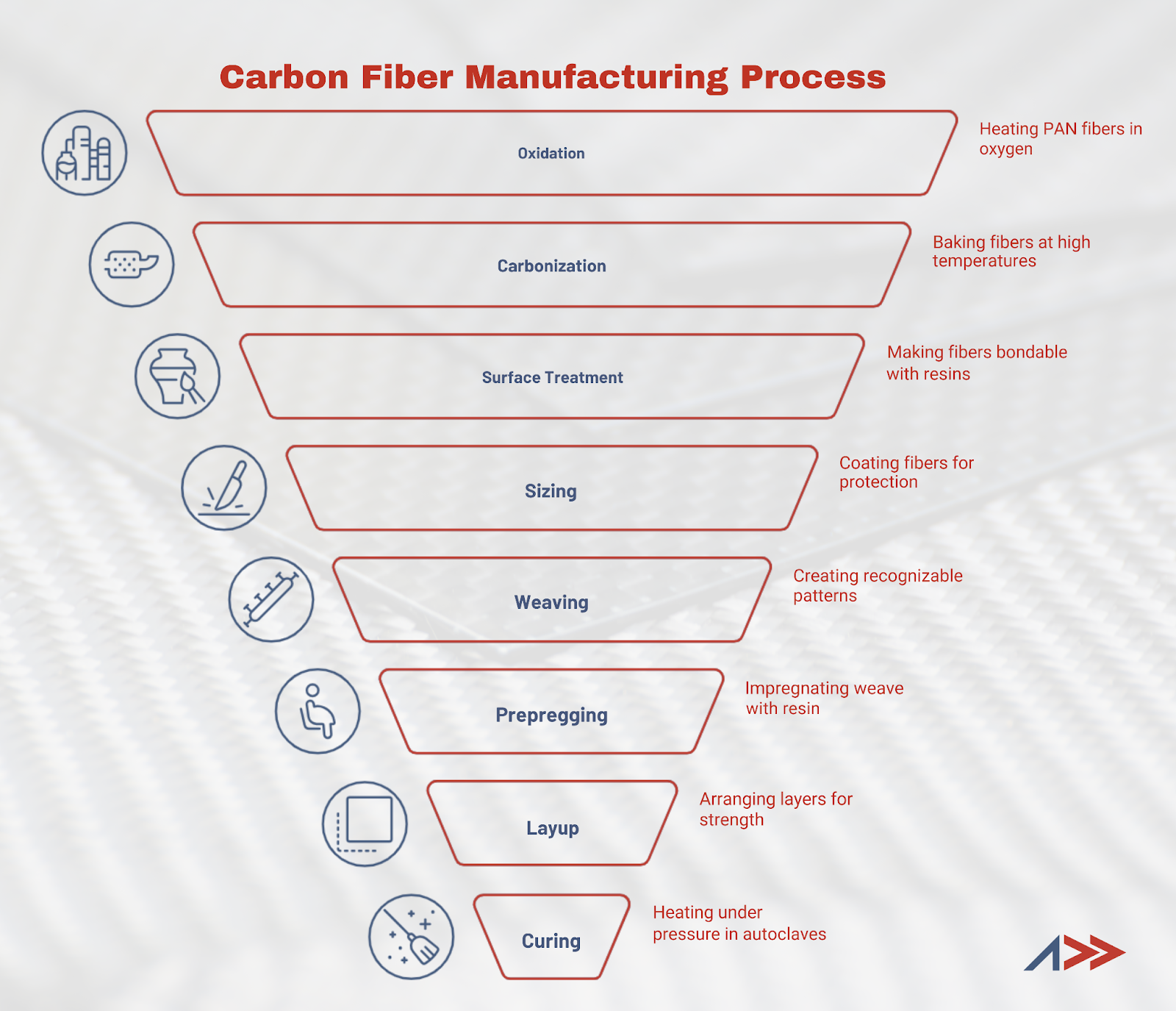






Ever wondered why that sleek carbon fiber hood costs more than your monthly rent? Let's unravel the mystery behind the hefty price tags of these lightweight wonders and discover why industries keep throwing money at them anyway.
This article contains research-backed information with links to authoritative sources.

If you've ever shopped for carbon fiber parts, you know the drill. You see something beautiful, pick it up feeling how impossibly light it is, flip over the price tag, and nearly drop it in shock. That carbon fiber replacement fender might cost 10 times more than its metal counterpart. But why?

Image Source: ResearchGate – Polyacrylonitrile (PAN)-based carbon fiber price structure, from the publication “Cost-effective and sustainable manufacturing of carbon fibers from low-cost precursors” (2021).
The journey begins with polyacrylonitrile (PAN), the precursor material that eventually becomes carbon fiber. This stuff isn't cheap to begin with—around $5 per pound. But here's the kicker: during processing, about half of it literally goes up in smoke. You read that right—manufacturers essentially burn away 50% of the raw material they paid for, instantly doubling the base cost, as explained in this Gizmodo analysis of carbon fiber costs.
Creating carbon fiber isn't like stamping out metal parts. It's a multi-stage technical marathon, as detailed by DragonPlate's manufacturing overview:
Each step requires specialized equipment, controlled environments, and significant energy input. According to RLZ Motorsports, a single mistake can ruin an entire batch.

While many manufacturing processes have been automated, creating high-quality carbon fiber parts still requires skilled technicians. Penta Patterns explains that the precision layup of carbon fiber sheets, ensuring proper orientation for maximum strength, remains largely a manual process requiring expertise and experience. This skilled labor requirement significantly contributes to the final cost of components.
Despite eye-watering prices, carbon fiber parts aren't going away. In fact, their use is expanding. Here's why companies and individuals keep opening their wallets:

Carbon fiber is five times stronger than steel while weighing about 70% less. This isn't just impressive—it's transformative. When BMW built their i3 electric vehicle with a carbon fiber passenger cell, they shaved off 250-350 kg compared to traditional materials. According to CompositesWorld's analysis of the BMW i3, this weight reduction directly translated to extended range—a critical metric for electric vehicles.
The Boeing 787 Dreamliner takes this advantage to new heights (literally). By constructing 50% of the airframe from carbon composites, Boeing achieved a 20% weight reduction. As detailed in ThoughtCo's analysis, for airlines, that means approximately 20% lower fuel consumption—an astronomical saving when you're burning thousands of gallons per hour.
It's not just about being lighter. Countervail Products explains that carbon fiber parts offer:
When Formula 1 teams switched to carbon fiber monocoques in the early 1980s, they discovered another crucial benefit: unparalleled crash protection. As Penta Patterns documents, the material's ability to progressively crush and absorb energy makes it exceptional for safety applications, famously demonstrated at the 1981 Monza Grand Prix when a carbon fiber monocoque proved stronger than traditional aluminum construction.
Unlike metals, carbon fiber doesn't fatigue in the same way and never corrodes. According to SMI Composites' benefits analysis, a properly manufactured carbon part can potentially outlast the vehicle it's installed on. This longevity helps offset the initial investment—similar to how a $50 quality shirt might ultimately cost less than five $15 shirts that wear out quickly. BMW's official carbon fiber overview further explains how this durability translates to long-term value despite the higher initial cost.

Beyond the obvious applications in aerospace and supercars, carbon fiber is finding homes in surprising places, as Addcomposites' industry guide reveals:
Each of these applications leverages carbon fiber's unique properties to solve problems that other materials simply can't address as effectively. For everyday enthusiasts, Carbon Bike Repair notes that the material has revolutionized sporting equipment like bicycles and tennis rackets by providing performance benefits that directly translate to competitive advantages.

The million-dollar question: will advancements bring prices down? The answer is cautiously optimistic. New manufacturing techniques like continuous fiber 3D printing show promise for reducing waste and labor costs. Additionally, Wikipedia's entry on continuous fiber reinforced thermoplastics explains how these alternatives (CFRTP) offer easier processing and potentially lower costs.
However, as CompositesWorld's industry analysis suggests, the fundamental expense of high-quality precursor materials and energy-intensive processing means carbon fiber will likely remain a premium option for the foreseeable future. The article notes that while adoption in mainstream automotive has been slower than expected due to cost barriers, the future opportunities remain promising.

Carbon fiber parts aren't expensive because manufacturers are gouging customers—they're expensive because they genuinely cost a lot to make, as Feral Industries' manufacturing analysis thoroughly documents. Their continued adoption despite high prices tells us something important: in applications where performance, weight, and durability truly matter, carbon fiber delivers value that justifies its cost.
So the next time you're contemplating that pricey carbon fiber upgrade, remember: you're not just paying for the cool weave pattern. You're investing in advanced materials science, specialized manufacturing, and performance benefits that simply can't be achieved any other way.
What's your experience with carbon fiber parts? Drop a comment below!